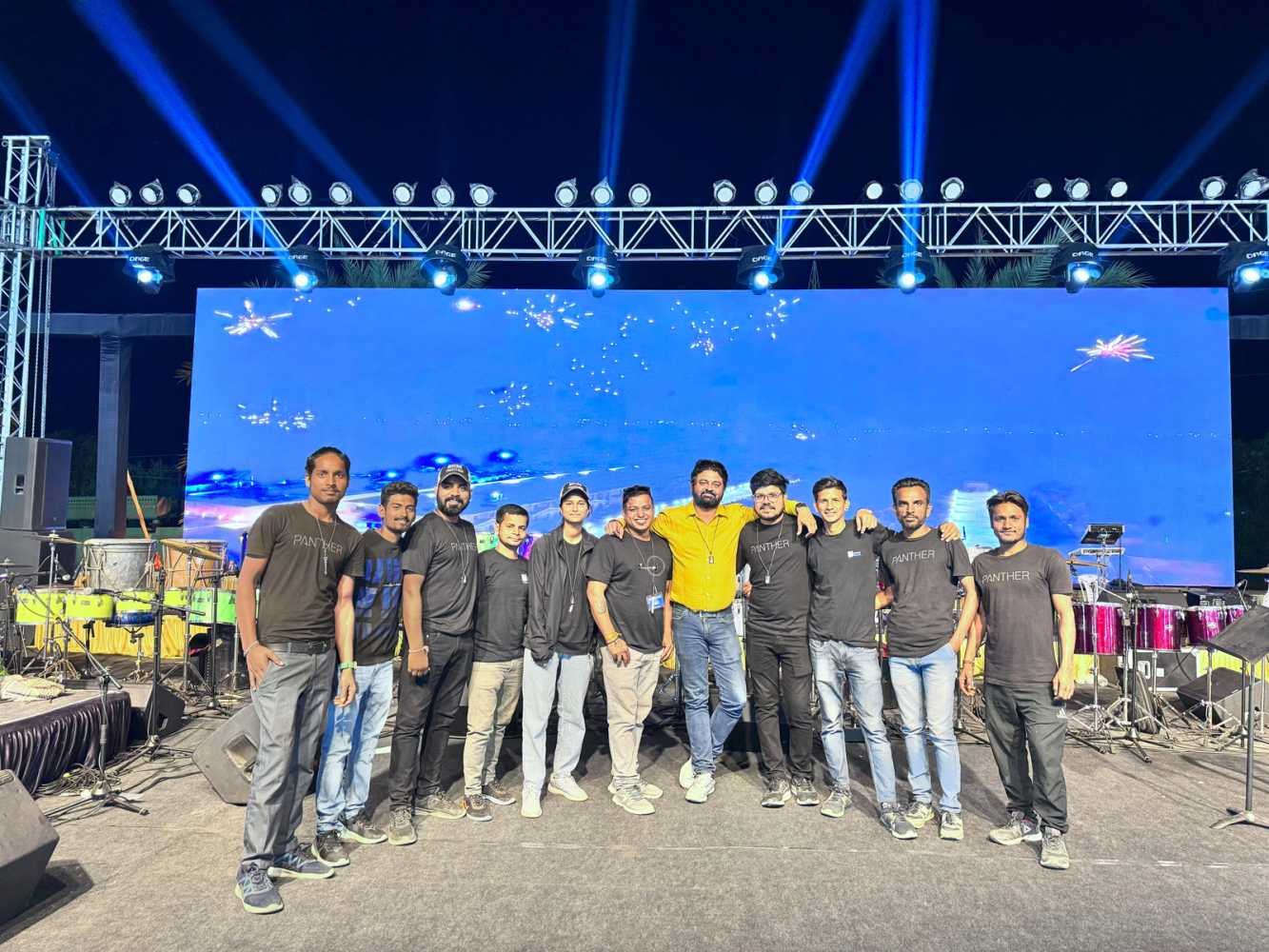Phoenix Panthers reinforce Navratri party
- Details

The vibrant tapestry of Hindu culture is woven with a myriad of festivals, each celebrating different facets of life and spirituality. Among these, Navratri stands out as a radiant and joyous occasion, marking the triumph of good over evil; with the festival spanning nine nights dedicated to the divine feminine in various forms - each representing strength, wisdom, and prosperity.
This year, the Rotary Club of Bhuj in Gujarat orchestrated a 10-day cultural extravaganza at the Sandalwood Villa & Clubhouse Grounds in Mirjapar. Nestled in the heart of Gujarat, this sprawling venue, measures 550ft in length and 260ft in breadth, setting the stage for a celebration of music, dance, and devotion.
The gathering witnessed performances by renowned artists, including the dhol virtuoso Aslam Dafrani of Hanif-Aslam fame, and soul-stirring singers Firoz Ladka, Amber Desai, Yasita Sharma, and Pallavi Dabholkar.
Technical production of the event was expertly planned and executed by Phoenix Networks.
“This was the perfect platform for us to showcase the true potential of the Panthers as the Navratri Celebrations organised by the Rotary Club Of Bhuj is by far one of the most prestigious and grand events to take place in the entire region,” comments Animesh Mishra, director of Phoenix Networks. “The sheer expanse and scale of the event was so magnanimous, that it not just presented us with the opportunity to demonstrate what the Panthers are capable of achieving, but also set the stage for our team of wonderfully talented and astute crew members at Phoenix Networks to shine bright with their impressive technical expertise and skill.”
Starting off with Meyer Sound's advanced MAPP3D software, the team meticulously crafted a map file, laying the groundwork for the correct sound reinforcement solution that eventually saw no delay reinforcement solution being deployed whatsoever, despite the massive expanse of the ground.
The team subsequently decided to fly the Panther line array system at an impressive height of 42ft, with 16 units of the Panther line array modules suspended on each side of the stage.
To enhance the low-frequency fidelity, Phoenix Networks decided to 'fly' six units of the compact yet powerful 1100 LFC subwoofers per side in a cardioid pattern; with this strategic move not only ensuring true linearity but also assertively ensuring that every beat resonated powerfully reached even the farthest corners of the vast ground with consistent projection and impact.
Animesh continues: “Considering the sheer expanse of the ground and taking into account that we aimed to have no delay reinforcement solution whatsoever, we tested out quite a few configurations for the subwoofer placements and found that there was cancellation of the subs along centre-line of the audience space, while also noting a considerably high level of back rejection.
“We therefore tried configuring the subs in a cardioid pattern and also angling them to fire slightly outward. It was first time ever that we had tried this out, and the pressure projection readings turned out to be much better. Hence, we decided that we would fly the 12 subs in the same configuration but at a height of 39ft, which allowed for better projection and coverage, while opting to also have six subs on the ground in front of the stage to further enhance the overall low-frequency experience for the audience.”
The auditory landscape was further enriched by eight compact Lina line-array modules from Meyer Sound, which were strategically placed as the centre-fill reinforcement.
To complement the loudspeaker solution, Phoenix Networks selected DiGiCo's flagship Quantum 338 digital mixing console and the SD10 digital mixing console for the FOH and monitoring stations, respectively, complete with two units of the SD Racks matched parallel with Optocore connectivity.
Microphones included the Shure Beta 52A and Beta 56A, Audix DP7, Sennheiser Neuman's clip-on microphones, Sennheiser 6000 wireless solution, and Shure's Axient Digital system. A total of 32 channels of Sennheiser 2000 In-Ear Monitors provided artists with a personalised monitoring experience, while eight MJF 210 wedges from Meyer Sound served as the primary floor-monitoring solution Alongside, 16 units of JBL's VRX 915M two-way stage monitors acted as the floor-monitoring solution for the band members, which allowed them to partake in a truly immersive performance experience.
















